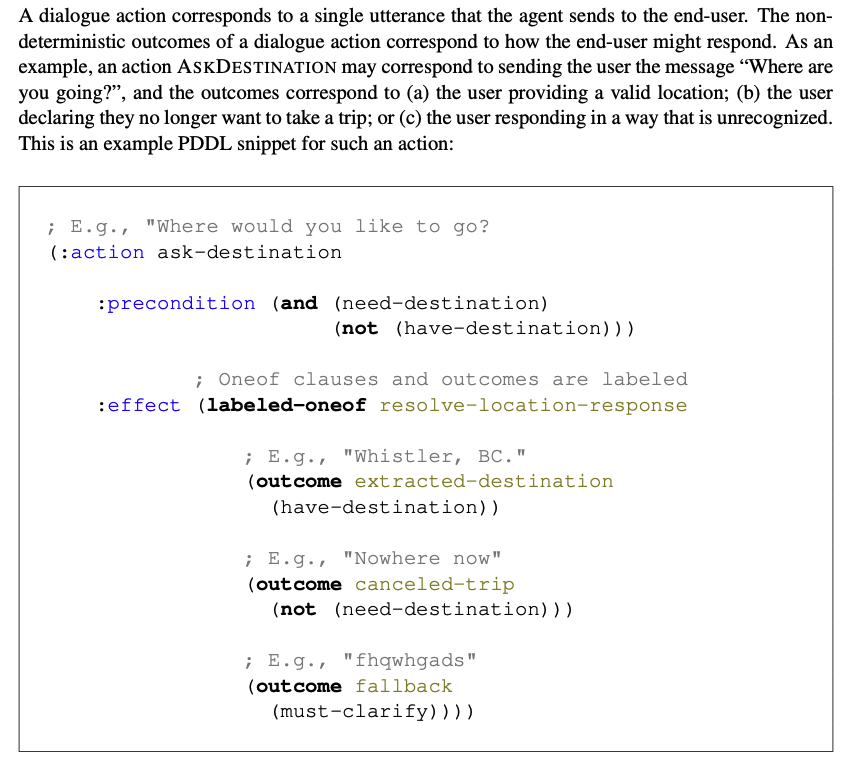[TOC]
- Title: Christian Muise Planning for Goal Oriented Dialgue Systems 2019
- Author:
- Publish Year:
- Review Date: Tue, Jan 30, 2024
- url: arXiv:1910.08137v1
Summary of paper
Motivation
- there is increasing demand for dialogue agents capable of handling specific tasks and interactions in a business context
Contribution
- the author propose a new approach that eliminates the need for manual specification of dialogue trees, a common practice in existing systems.
- they suggest using a declarative representation of the dialogue agent, which can be processed by advanced planning tech (tree -> planning)
- The paper introduces a paradigm shift in specifying complex dialogue agents by recognizing that many aspects of these agents share similarities or identical underlying processes. Instead of manually creating and maintaining entire dialogue graphs, the authors propose a declarative approach where behavior is specified compactly, and the complete implicit graphs are generated from this specification.
Some key terms
limitation of end to end trained machine learning architectures
- particularly in understanding the goal-oriented nature of dialogues.
- Initial attempts using recurrent neural networks were more suitable for casual chit-chat applications.

Actions types
- the interface (Program UI) allows three types of actions that perform different roles in the course of an interaction between the bot and the end user.
- Dialogue action are performed directly with the user via conversation. The designer out- lines how the bot expresses itself (such as in asking for credit card details) and possible user utterances in response for each possible outcome.
- System or “logic” actions are internal to the bot and are used to make internal inferences about the world to maintain and update state information (for example, in setting credit card details to known once the bot determines membership in loyalty program).
- Web actions or “cloudfunctions” allow the bot to respond to actionable items during an in- teraction (for example, placing an order with the acquired card details). This is crucial to the development of goal-oriented dialogue agents in domains such as customer support where the agent needs to perform actual tasks beyond chitchat, for example, to pull data from a user’s account, set information such as usernames, passwords, etc. issue tickets, book orders, and so on.
Evaluation
they demonstrate scale up of the size of declarative specification by having more variables and actions and see the generation time
- size of specification
- number of variables
- number of actions needed
- size of graph
- number of node and eges
- time to generate
Potential future work
I cannot find a good metric here to evaluate such AI assistant
